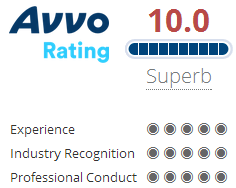In the final look at Standardized Field Sobriety Tests, or SFSTs, we turn our attention to the one-leg stand. Like the walk-and-turn test, the one-leg stand is a divided attention test to gauge a driver’s ability to listen to instructions and perform simple tasks. The test is an indicator of a driver’s level of intoxication. The National Highway Traffic Safety Administration, or NHTSA, claims that the test is easy for a sober person to perform, but not for someone who is drunk. That is why the test is used to determine whether a driver is under the influence of alcohol or not.
It is important for drivers in California to understand the ins and outs of field sobriety tests because they are used in DUI arrests and charges. For instance, an arresting officer may use the driver’s field sobriety test results to establish probable cause for a DUI arrest. This and the other field sobriety tests are helpful to the prosecution in convicting a driver who:
- Does not have a blood alcohol concentration, or BAC, level at or above 0.08 percent.
- Has impaired driving abilities because of alcohol intoxication.
How Police Conduct the One-leg Stand
A police officer asks a driver to stand on one foot with one foot about six inches off the ground. He or she also instructs the driver to count aloud by starting with "one thousand one" until told to stop. Afterwards, the driver can place his or her foot back on the ground. The test should take approximately 30 seconds to administer. During the test, the police will look for signs of impairment such as the driver’s:
- Inability to balance on one foot.
- Hopping or trying to hop to keep from falling.
- Use of his or her arms to maintain balance.
- Inability to keep foot off the ground as instructed.
When a driver shows two or more signs listed above, he or she may have a BAC of 0.08 percent or higher. A study funded by the NHTSA claims that the test has an 83 percent success rate.
Problems with the One-leg Stand Sobriety Test
There are problems with the accuracy of the one-leg stand test. For instance, this is a physical test. This means that overweight and elderly drivers may have trouble correctly performing the test regardless of the level of intoxication. Also, conditions like weather and location may alter the test results. Can an individual really complete the test while wearing high heeled shoes, in the dark, rain or facing flashing cruiser lights? Even passing vehicles and pedestrians walking past can distract a driver performing a one-leg stand test.
To give drivers a fair chance to pass the one-leg stand and other sobriety tests, the officer should be fair in assessing a driver’s performance. Also, the officer should give clear instructions that are straightforward and easy to understand to avoid confusion. Although deviations from the protocol may affect a driver’s performance, it can be considered as evidence for an effective DUI defense.
At the Law of Offices of Jonathan Franklin, we represent drivers in Los Angeles County who have been pulled over and arrested for DUI. We investigate and analyze our client’s field sobriety tests as a vital part of our defense strategy. For instance, we review the officer’s report and any video of our clients performing the field sobriety tests. In addition, we cross-examine the arresting officer to discover any problems such as testing errors that may have changed the outcome of the results. Contact us today about a free consultation regarding your DUI case.













